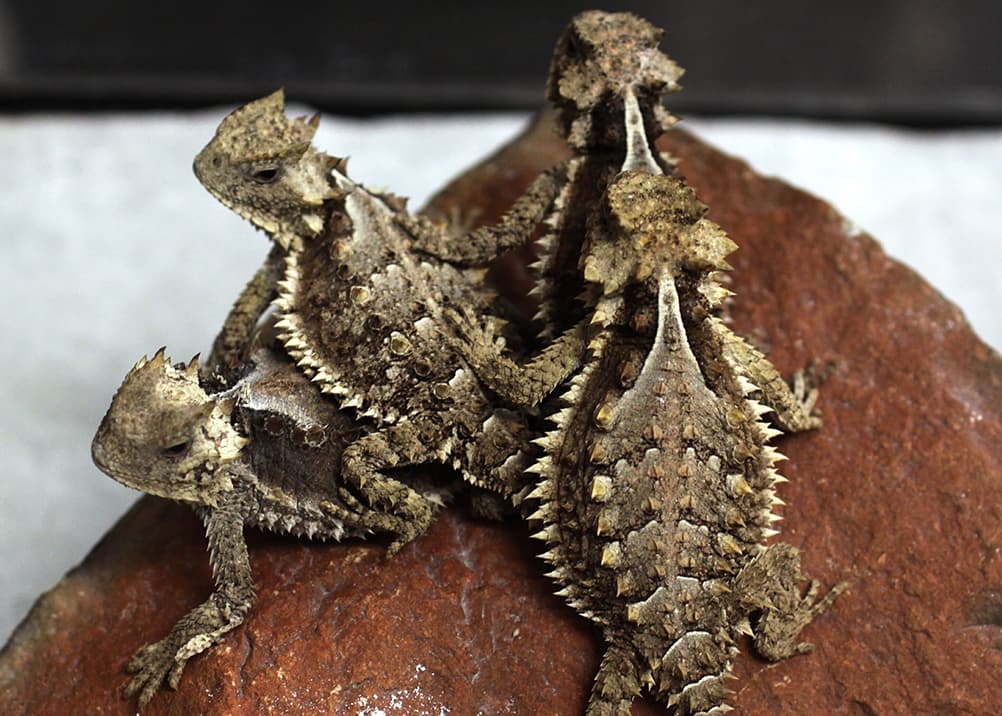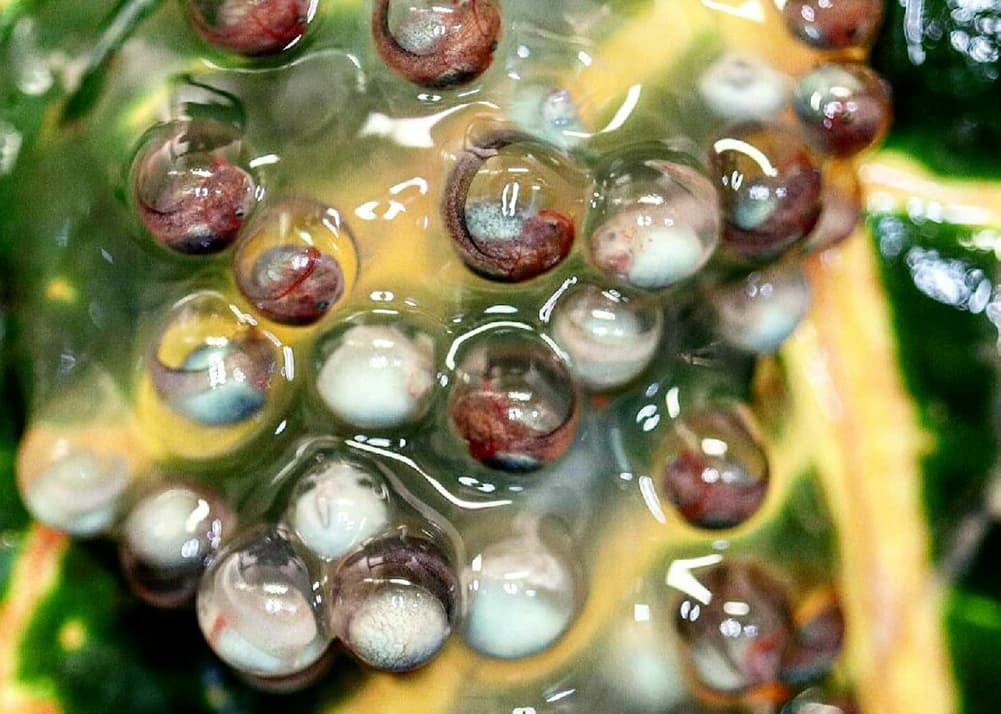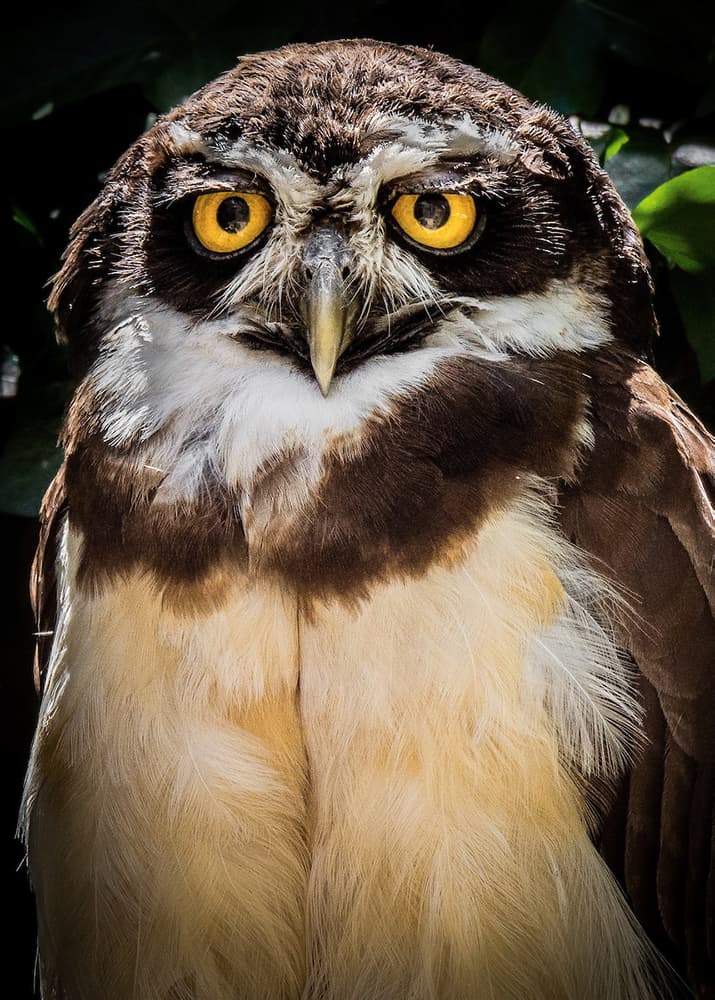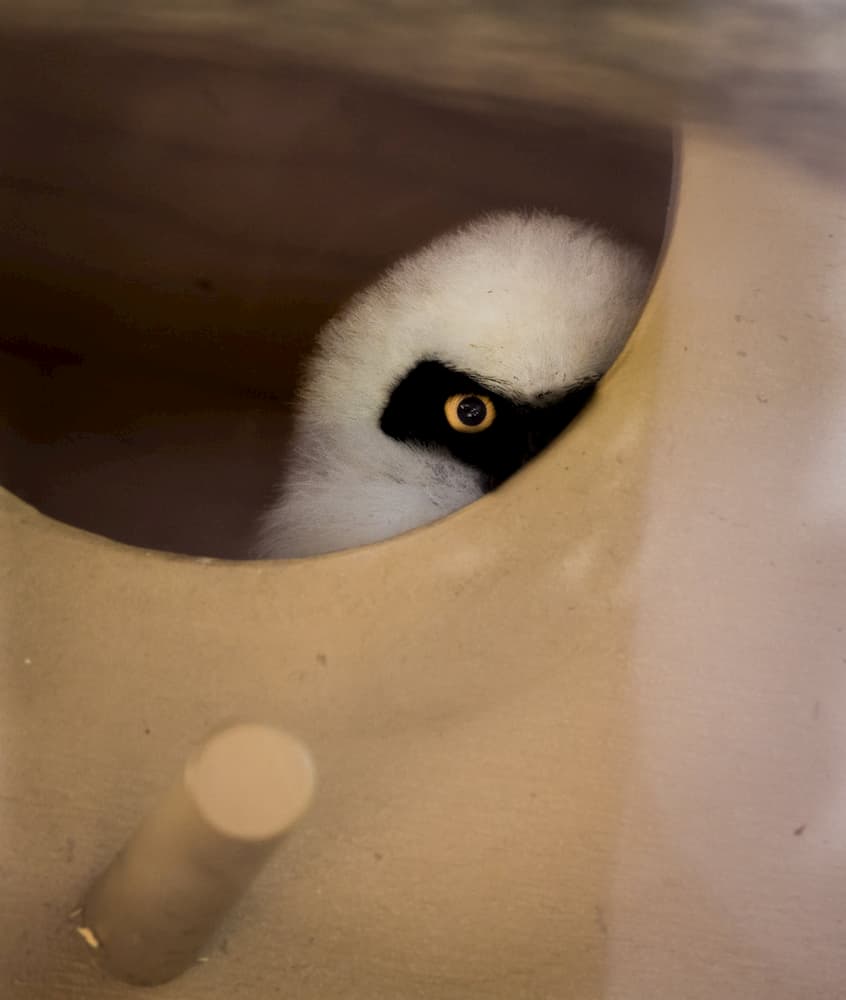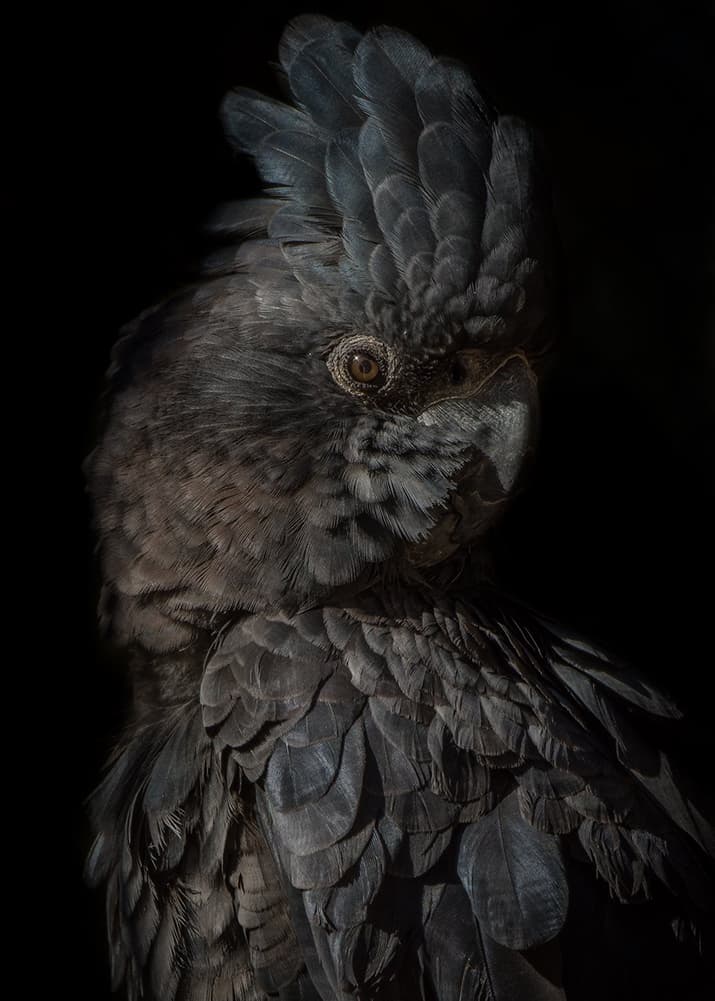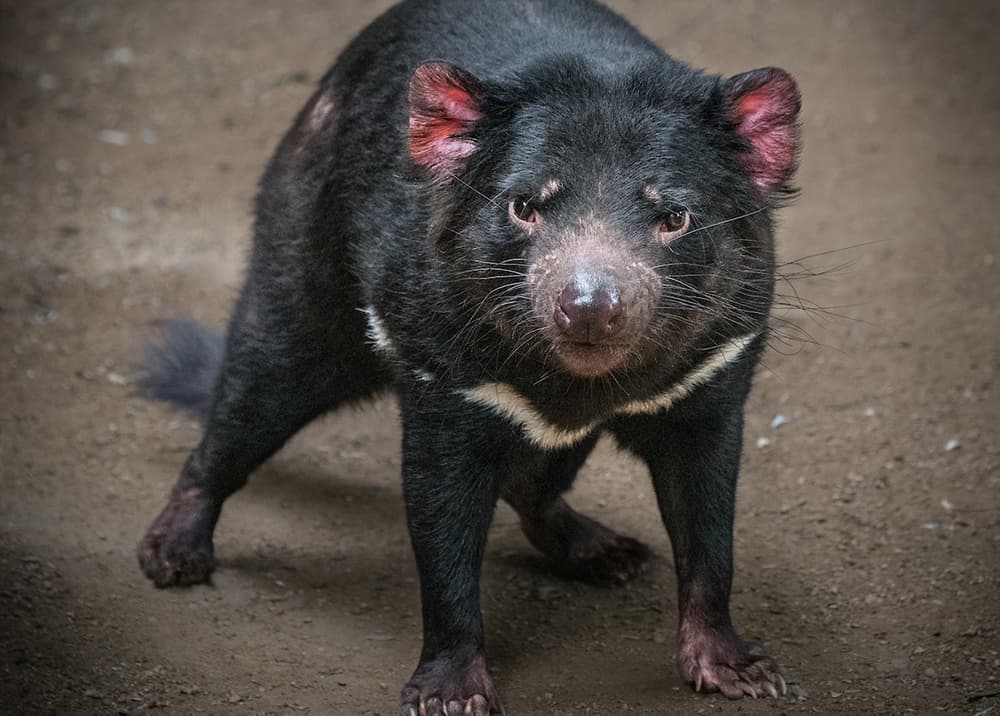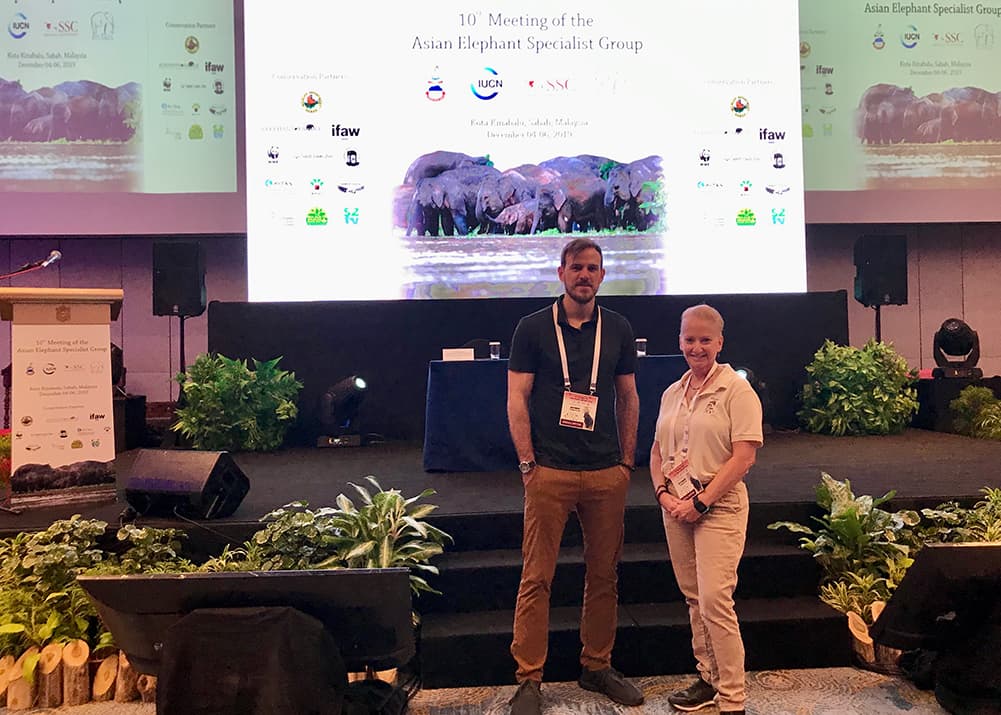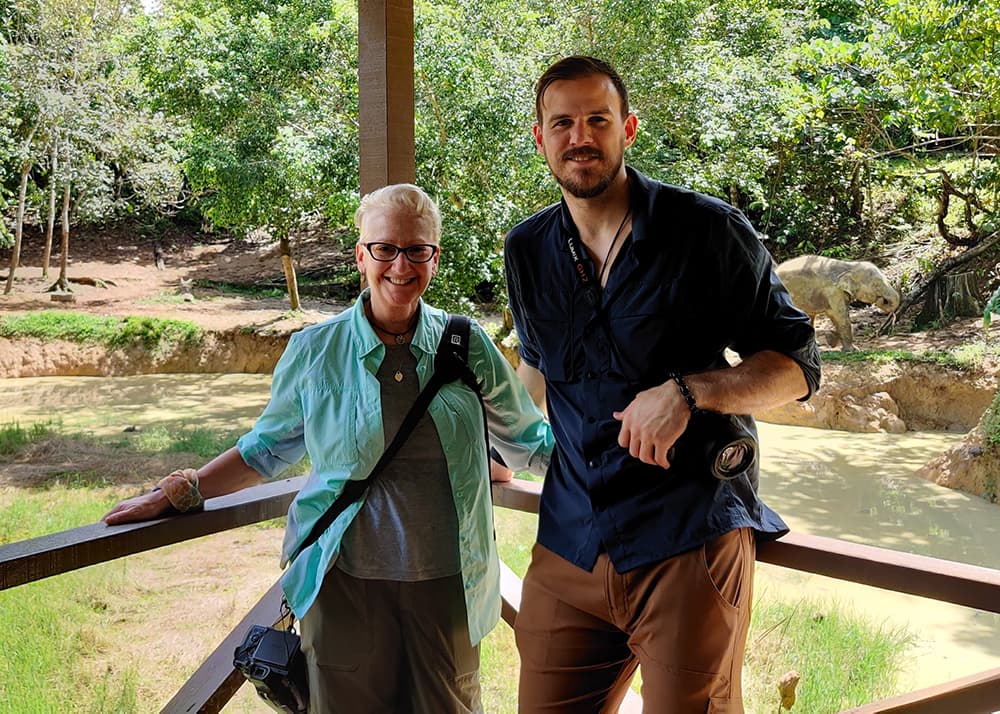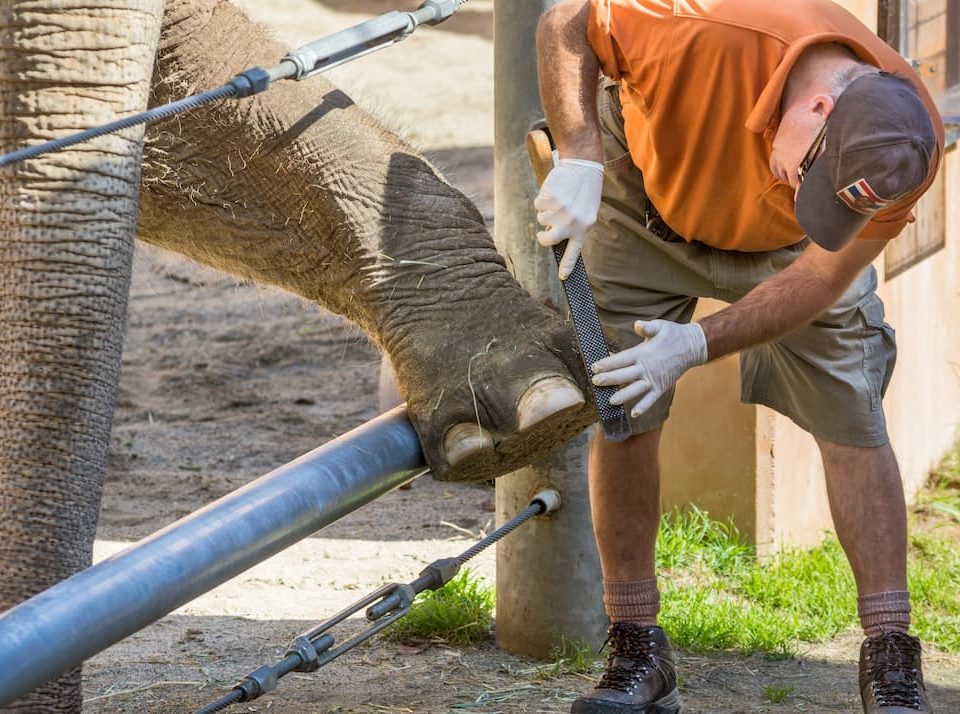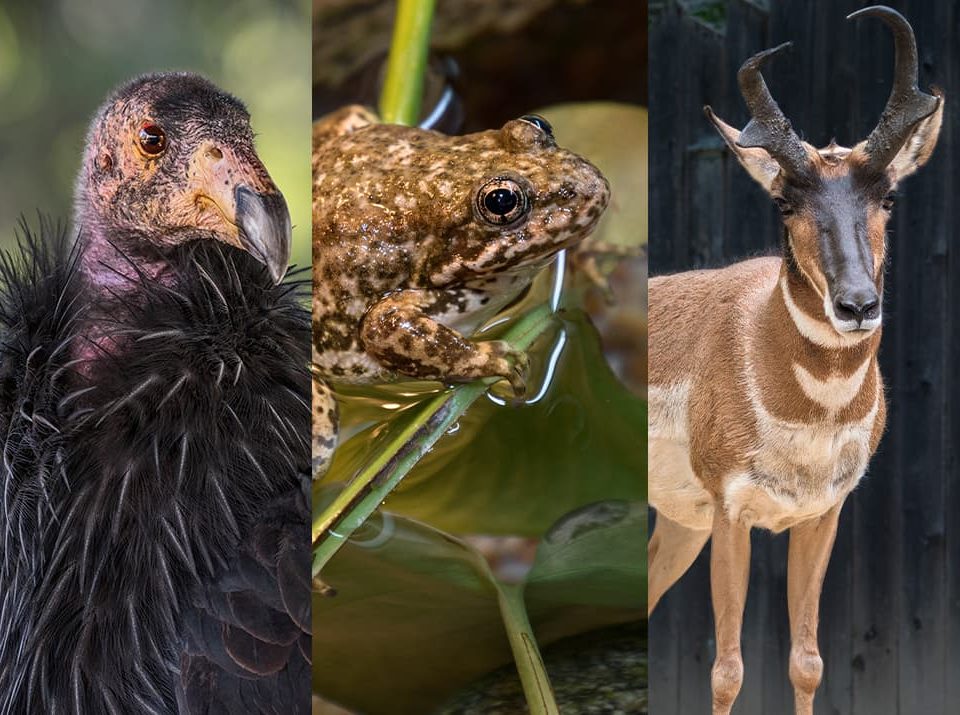New in the Zoo

Fighting Against Extinction
February 1, 2020
New mom N’djia with her newborn. Photo by Jamie Pham
On January 18, the L.A. Zoo announced the birth of a healthy baby to 25-year-old western lowland gorilla N’djia. The first-time mom delivered the baby (who’s sex has yet to be determined) early that morning and they spent their first day together bonding behind-the-scenes. This is the first gorilla birth at the L.A. Zoo since 1996.
"This historic birth is a step forward for the conservation of this critically endangered species,” commented Zoo Director and CEO Denise Verret. “For the first time in over two decades, Angelenos will now have a unique opportunity to watch a gorilla baby grow up at the L.A. Zoo. I want to thank our dedicated animal care and animal health teams who have worked tirelessly monitoring N’djia and her baby’s progress.”
Animal care staff are allowing N’djia and her newborn the option to join father, 32-year-old silverback Kelly, and the rest of the troop (which includes Rapunzel, 35, and Evelyn, 43) on exhibit or to remain behind the scenes. So, depending on what N’djia chooses to do, you may be able to glimpse them as mom and baby begin to explore the Campo Gorilla Reserve. Animal Care staff will continue to closely monitor N’djia and her baby’s health and development. Stay tuned for more updates and follow along at @lazoo or #lazoo on Facebook, Twitter, and Instagram.
Two clutches of giant horned lizards hatched in November and December, producing a total of 19 babies. The L.A. Zoo has worked extensively with this charismatic species since the first individuals arrived in 2008. When Animal Care staff incubated and hatched a clutch of eggs in December 2010, we became the first zoo in North America to do so, an achievement that drew attention from herpetologists around the world.
The “giant” part of their common name might seem like an exaggeration since this particular species, native to neo-tropical regions in Mexico, reaches a maximum size of 10 inches in length. They are, however, among the largest of the 22 horned lizard species native to North America. While horned lizards – or “horny toads,” as they’re sometimes called— are familiar to many in the Southwest, not much is known about wild populations of this desert icon.
These youngsters are currently being cared for in an off-exhibit nursery, but adult giant horned lizards are on exhibit in the LAIR.
The first hatching of 2020 was a cluster of about 25 fringe-limbed treefrog eggs. The Zoo’s herpetology staff have been working with a pair of these frogs behind the scenes for about two years, hoping for reproduction. Although this species has not been designated as endangered, little is known about its habits and natural history, and populations are declining. They are rarely seen either in their natural Amazon rainforest habitat or in zoo collections.
Once the eggs are laid and fertilized, they take about 10 days to hatch, at which point the tiny tadpoles will "pop" out of the eggs that are carefully placed by the adults on leaves overhanging pools of water. As they hatch, the tadpoles fall into the water below, where they develop into frogs over a period of several months. These offspring are on view in the Rainforest of the Americas. This is another first-time reproduction for this species at the Los Angeles Zoo.
A spectacled owl chick hatched in the nest box provided in the parents’ habitat located in the South America section of the Zoo. The mother has been very protective of the owlet, so glimpsing the baby proved challenging at first.
In December, four California condors were sent to the Zoo for medical treatment.
Next time you visit the Tiger Plaza section of the Zoo, be sure to stop in at the roundhouse exhibit located between the black bear and hippo habitat and say hello to a pair of red-tailed black cockatoos. These birds arrived at the end of last year and, having completed the standard quarantine, began settling into their new residence at the end of January. There are five subspecies of this large, gregarious Australian cockatoo, and the southeastern subspecies is listed as Endangered under Australia’s Commonwealth Environmental Protection and Biodiversity Conservation Act of 1999 although the International Union for the Conservation of Nature (IUCN) designates the species as “Least Concern.” This is an example of why genetic studies of wild populations are so important. As with giraffes, which were all considered a single species until recently, the overall population of a particular animal may appear stable over a large geographic range, but isolated subspecies may be declining dramatically. Our pair of red-tailed black cokatoos is a Species Survival Plan match that is hoped will produce chicks.
Tasmanian devil Moloch passed away on December 10. He was 6 1/2 years old, which is elderly for this species, which averages a lifespan of about five years. Moloch and his brother, Mutiny, arrived on December 9, 2015, and immediately captivated staff and guests. The siblings came from Tasmania’s Trowunna Wildlife Park, a privately owned facility that is home to the world’s largest heritage population of endangered Tasmanian devils. The L.A. Zoo is one of only four U.S. zoos that cares for this species and participates in a Conservation Ambassador Program in partnership with the Save the Tasmanian Devil Program. “Moloch was one of the best devils to grace this earth,” comments Animal Keeper Andrea Delegal, “I am so lucky to have been a part of his life. He taught me so much, and I will miss him terribly!”
In early December, L.A. Zoo Director of Animal Programs Beth Schaefer and Director of Conservation Dr. Jake Owens were invited to represent the Los Angeles Zoo at the 10th meeting of the International Union for Conservation of Nature Species Survival Commission Asian Elephant Specialist Group Meeting in Kota Kinabalu, Malaysia. This meeting comprised more than 110 of the world’s experts on the conservation of Asian elephants in the wild.
Schaefer and Owens attended presentations on the status, threats, and conservation of Asian elephants throughout the 13 range countries in which they remain, participated in working groups to tackle some of the biggest threats to elephants in the wild and searched for wild elephants on the Kinabatangan River.
“Unfortunately, we learned that the situation in the wild is worse than we realized,” says Owens. “Habitat loss is increasing, conflicts between humans and elephants are getting worse, and the retaliations against elephants are exceedingly brutal. We need to increase our own role in this fight and help ensure Asian elephants exist long into the future.”
During the meeting, Schaefer and Owens worked directly with organizations from range countries to identify potential partners that are in need of the wide range of expertise developed at the L.A. Zoo, including veterinary care, routine husbandry, education, and more that can support ongoing efforts to save this endangered species. Owens adds, “This meeting was the perfect opportunity to discuss the expanding conservation program at the L.A. Zoo with members of the broader conservation community and determine how we could most effectively help save Asian elephants from extinction.”



